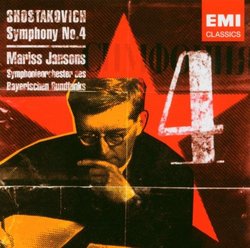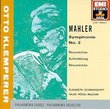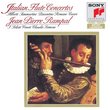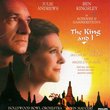| All Artists: Dmitri Shostakovich, Mariss Jansons, Bavarian Radio Symphony Title: Shostakovich: Symphony #4 - Mariss Jansons/Bavarian Radio Symphony Members Wishing: 0 Total Copies: 0 Label: EMI Classics Release Date: 11/2/2004 Genre: Classical Styles: Historical Periods, Modern, 20th, & 21st Century, Symphonies Number of Discs: 1 SwapaCD Credits: 1 UPC: 724355782427 |
Search - Dmitri Shostakovich, Mariss Jansons, Bavarian Radio Symphony :: Shostakovich: Symphony #4 - Mariss Jansons/Bavarian Radio Symphony
 | Dmitri Shostakovich, Mariss Jansons, Bavarian Radio Symphony Shostakovich: Symphony #4 - Mariss Jansons/Bavarian Radio Symphony Genre: Classical
|
Larger Image |
CD DetailsSimilarly Requested CDs |
CD ReviewsAnother spell-binding version of this great symphony MartinP | Nijmegen, The Netherlands | 11/07/2004 (5 out of 5 stars) "When Shostakovich finally heard this piece premiered, almost 30 years after its composition, he commented that much of it seemed to him to be on a higher level than his more recent works. Personally, I've always considered this easily the best of his 15 symphonies: emotionally, musically as well as philosophically it encompasses wider vistas than any of the others. The finale, with its initial bombast and banality, its subsequent shattering faux-climax, and its final lonely desolation, stands as a signature piece of the 20th century. And only in the 14th and 15th symphonies did the composer again venture such daring harmonies and original orchestration. As with any truly great work, bad recordings of this symphony don't seem to exist. It consistently draws out the best in its performers. Though many feel that the Russians (especially Kondrashin, Rohdestvensky and Barshai) hold the key to it, personally I find these native interpretations somewhat biased towards the brutal side, underplaying the deep, wistful feeling present in many passages - Rohdestvensky and Barshai are positively vitriolic. It is in quieter passages that this new recording especially excels. For instance, the violin line emerging after the collapse of the opening march at nr. 161 in the Finale, is played with gut wrenching tenderness and fragility, and the eventual shift into a warmer climate once the cellos come in, is intensely soothing. The many solo passages come off as perfect as can be, and are often very personally characterized. Jansons also makes sure to bring out the almost constant presence of subtle dissonances in passages that on first impression may sound consonant. The effect is telling, especially since he benefits from a spectacularly beautiful and transparent recording. Even in the most purple passages you are able to distinguish the separate activities in each orchestral group. The manic timpani in the final climax are there, as well as the often unheard tuba pedals. In short, this new version of the 4th had me spell-bound, and once again its compelling, hour-long span seemed to be past in a matter of minutes. It goes to the top of my list, alongside Haitink and Järvi (this symphony really has come in from the cold as far as recordings are concerned!). EMI is now competing with itself, given Rattle's equally impressive, though somewhat more "rational" account on that same label. I think Jansons's version is even richer, and even better, more realistically and warmer recorded. The little chauvinist in me of course regrets he didn't choose to record this work with his other new orchestra, at the Concertgebouw, but in truth the Bavarian players leave very little to be desired (terrific horns!). " One of the best entries in Jansons' Shostakovich cycle Santa Fe Listener | Santa Fe, NM USA | 06/24/2007 (4 out of 5 stars) "The two previous reviewers are so well-meaning that I feel grouchy pointing out a few things. First, the Shostakovich Fourth doesn't have a history of great recordings. Quite the opposite. Esteemed conductors on the order of Simon Rattle, Andre Previn, Leonard Slatkin, and Eugene Ormandy have failed to find the key to this huge, puzzling work. It's no surprise that Mravinsky never undertook to record it (did he ever conduct it?) Although full of fertile ideas, the Fourth feels episodic, and the relationship between a dozen thematic groups defies ready understanding. To my ears, this is Shostakovich trying to build the multi-dimensional world of Mahler in his own modernist idiom but not quite succeeding (the composer expressed serious doubts about the work but also praised it, a contradiction). In any event, a great Fourth is hard to find. Both this one, however, and the one from Philadelphia on DG under Whun-Myung Chung feature excellent engineering and a first-rate orchestra. I think Chung has the edge in energy and dramatic surprise. Jansons tends to be overly cautious in general in his conducting for my tastes. Rhythms are a little foursquare, and the conductor doesn't knit together the loose joints with inspiraiton of his own--he tends to be a literalist, not always the best approach to this composer. Still, this must be counted as a successful entry in Jansons' often variable Shostakovich cycle for EMI, which has wandered from orchestra to orchestra over the years. I think anyone who bought either the Gergiev, Chung, or Jansons recording would be well served." Jansons conducting Shostakovich 4th: A shattering and hypnot H. Granot | Ein Dor, Israel | 09/24/2006 (5 out of 5 stars) "
The present recording of Dmitri Shostakovich Fourth Symphony was made by the much respected conductor Mariss Jansons. The recording was recorded with the Bavarian Radio Symphony Orchestra. Shostakovich completed his Fourth Symphony in May, 1936. The premiere was supposed to be performed by the Leningrad Philharmonic under the German conductor Fritz Stiedry. However, during the symphony rehearses it was cancelled. Follow the premiere cancellation Shostakovich decided to withdraw the symphony. The reason for Shostakovich move was without doubt connected to Stalin's regime. Stalin's regime wanted music that will contain in it optimism. Most importantly, it is the end of the work, the conclusion that should be packed with optimism. Shostakovich ends his 4th, in my opinion, in one the most hypnotic conclusions in the 20th century modern music. The conclusion has no optimism in it, not even the slice. There is a bleak felling which drifts across the conclusion, sense of despair, of unknown. It is Shostakovich thought about his time that might have been translated here to sounds which tell the world something bad is about or already happens. In the U.S.S.R there is Stalin's "socialist" regime. In Europe the worse begin to evoke under Hitler's Nazi regime. Those two regimes represent the sunset of democratic. Values and human rights are now being smashed under strict rules and military forces. The premiere of the Symphony took place in the Moscow only in 1961 under the great conductor Kiril Kondrashin. There for the symphony was withdraw for 25 years. Shostakovich was in the hall when the premiere took place and as it is pointed in the booklet notes Isaak Glikman one of Shostakovich friends was sitting next to him and remember Shostakovich telling him, "it seems to me that in many respects my Fourth Symphony stands much higher than my most recent ones". Academic words can barely describe Shostakovich music. For me, Shostakovich and his music represent a key figure in the 20th century. Shostakovich never wrote music for the taste of the audience. It was his own authenticity that drives him writing music that will reflect his feelings about the time he live in. There where no sweet dreams in the time the 4th was written. Malicious acts were being taken by the U.S.S.R ruler, Stalin. People were held in prison, taken to slavery and executed for reasons can't be understand. It was a task of a life time for Shostakovich to tell the grim story of the humanity. Almost each of his Symphonies tell us part story of bigger one. There is always the restless struggle for finding peace, serenity, in a place where the army never stops marching and making his horrible noises. Such element in Shostakovich music can be heard clearly in his 4th. The orchestra plays without stopping for a second, motive are mixed within each other. It is a total chaos going on and you can hardly find a place to breath. The sounds are nervous, loud. Like big army they surround you and you can't find a way of escaping. You are now under the magnifying glass of the soviet regime. Mariss Jansons is without doubt one of today most important interpretations to Shostakovich music. Under his hands Jansons deliver 4th which convey a shattering experience. There are already in the discography many notable recordings such has the Kondrashin one, Haitink, Jarvi and Rohzdestvensky. For modern versions we have Rattle, Chung, Barshai, Gergiev and Jansons. Each performance has its strengths and delivers the drama in other way. Jansons deliver the 4th drama in a stunning way. Under his hands the tension never drops. Climaxes are delivered with full power played by the Bavarian Radio Symphony Orchestra sounding on top form. Shostakovich 4th contains in it many technical challenges and orchestral details never to be delivered in one recording. Jansons and his orchestra are up to the challenges and they are supported with good and authentic engineering sound by EMI. This is easily one of the greatest modern versions on the 4th. I recommend this CD for every one who interest in experiencing modern music and Shostakovich fascinating and complex music. " |

 Track Listings (3) - Disc #1
Track Listings (3) - Disc #1







